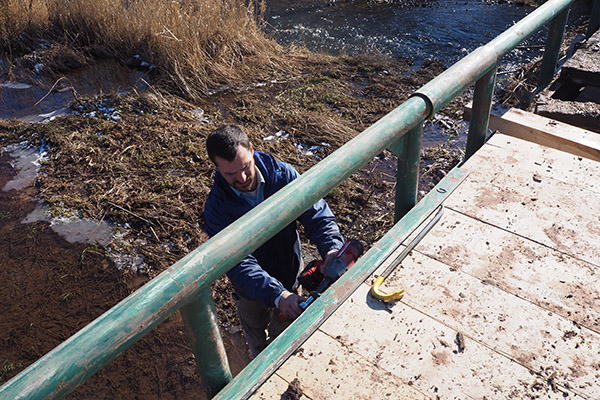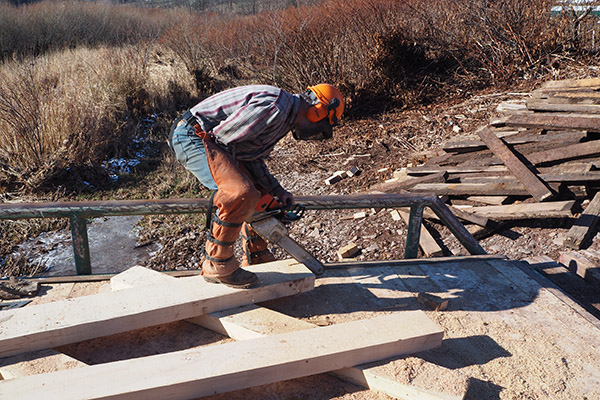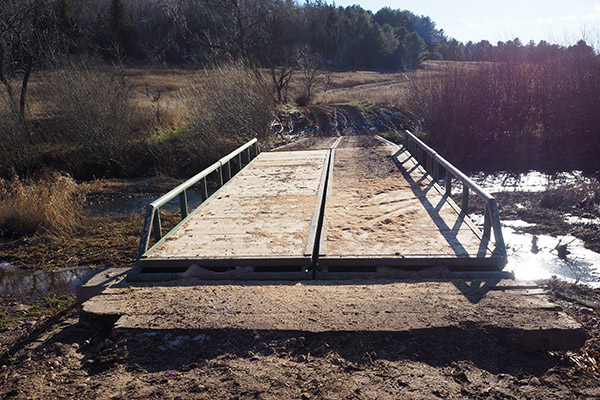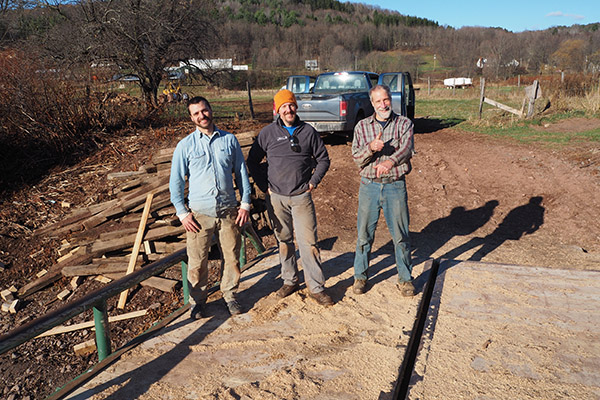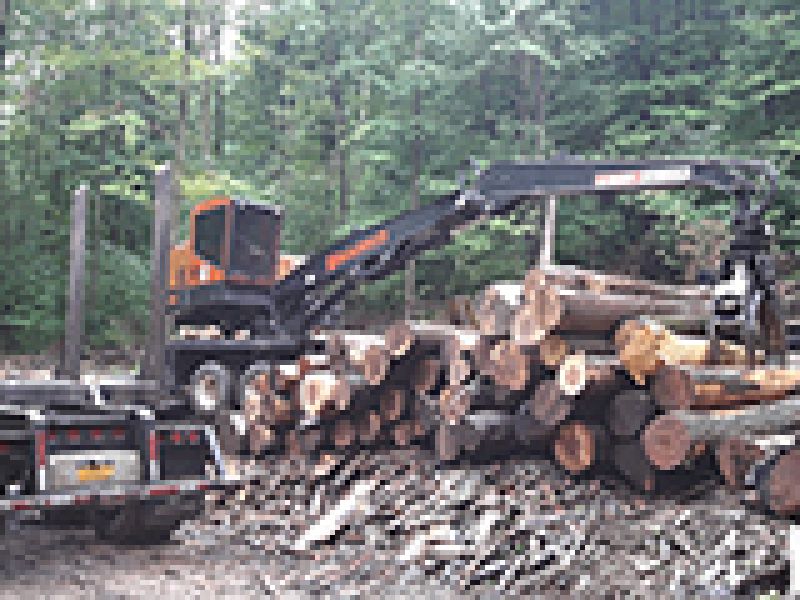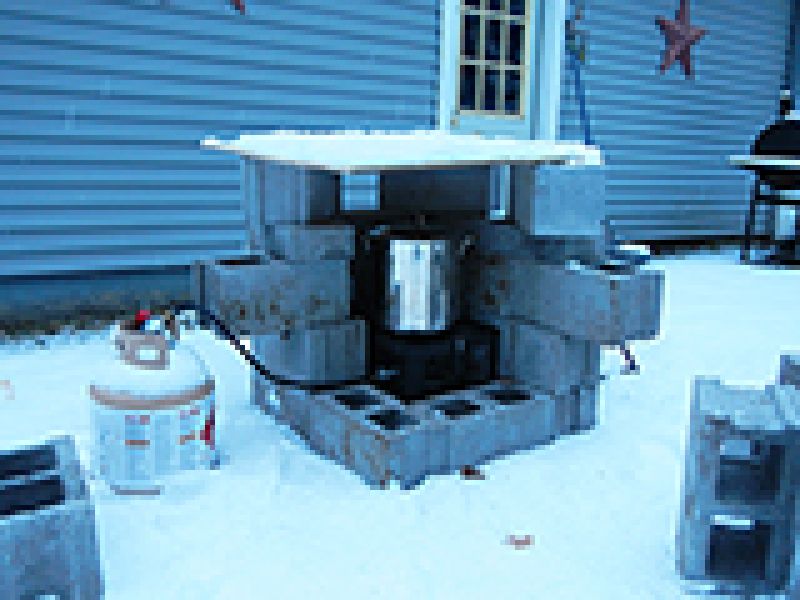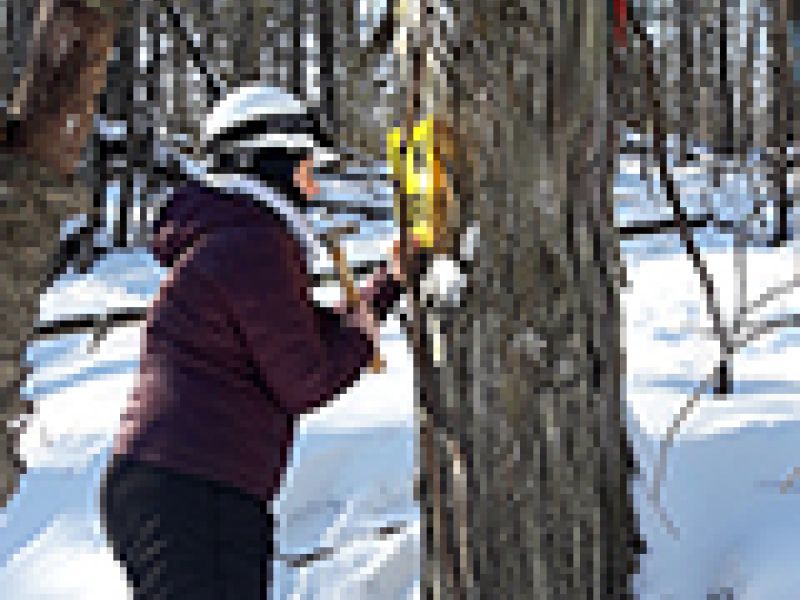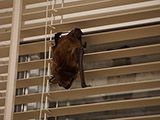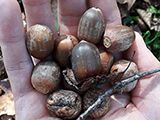Written By Kris Brown.
Posted on November 27th, 2019.
Tagged with WAC Forestry Research, Forestry BMPs.
The WAC forestry program helped to repair the decking on a bridge at a timber harvest in Windham, NY.
Logger Dave Jaeger needed a substantial bridge to skid logs across the Batavia Kill near Windham, NY. In fact, two portable panels (one 30-footer and one 40-footer) were set on concrete footings and tightened together with chains to form the bridge. Dave obtained the panels through the WAC Forestry BMP Program, which includes free bridge loans for logging jobs in the NYC watershed.

View of the bridge from the south bank of the Batavia Kill in September 2019.
When Dave began the job in September 2019, the white oak decking on the 30-foot panel had seen better days. After 10 years of service, it was time for the decking to be replaced. WAC Watershed Forester Karl VonBerg reached out to Tom Wormell in nearby Saugerties, NY to provide the lumber needed for the job.

The worn decking on the 30-foot panel can be seen in the background.
The dimensions of the lumber used for the decking were 75 inches long x 10 inches wide x 3.5 inches thick. The density of white oak is about 47 pounds/cubic foot, which means that each board weighed about 70 pounds. Can someone say team lift?
One of four pick-up truckloads of white oak lumber used for this project.
Assuming a total wood deck measuring 30 feet long x 12 feet wide x 0.29 feet thick, we needed roughly 105 cubic feet of lumber, or 1260 board feet. That’s 2.5 tons of rough sawn lumber, or about 72 team lifts. At $2/board foot, the lumber for this project cost $2520.
On November 15, Karl, Andrew Krutz, Tom Pavlesich, and myself teamed up to complete the decking repair. Karl and Andrew had already completed about a quarter of the work on a cold and rainy day about a week prior.
The task involved removing sections of angle bar, located just inside the rails, that lock the boards in the bridge frame. We used a prybar to remove the rotten (and frozen together) boards, just a few at a time. Karl used a chainsaw to cut the new boards to a length of 6 feet. Then two of us placed the boards in the frame until we reached the end of a section.
Angle bar used to lock the decking boards into place.
Removing the rotten boards and replacing them with fresh white oak.
Andrew Krutz locks a section of angle bar into place.
The process was fairly straightforward, but there were a few tricky bits. For example, about every fourth board, Karl had to cut a notch in one of the ends to make it fit in the frame.
Karl VonBerg cuts a notch in the end of a board.
Also, when it came time to fit the final board, we found that we needed a board with a width of 9 inches on one end and 8 inches on the other end to fit. Nothing a little chainsaw work and pounding with the hammer couldn’t fix, however.
The finished product.
Not a bad way to end the week.
All up, this project took about 1.5 days work once we had the lumber. Here’s to another 10 years of getting skidders across streams safely and with minimal environmental impact.
For more information about the WAC Forestry Bridge Loan program, check out pages 30-33 in the Forestry Program Handbook. Also, check out MyWoodlot.com for more information about stream crossings used during logging.
To read more about portable bridges, check out the following:
Portable Skidder Bridge Installation at Siuslaw Model Forest
Building Skidder Bridges for the WAC Bridge Loan Program
Replacing the decking on a 30-foot portable bridge



